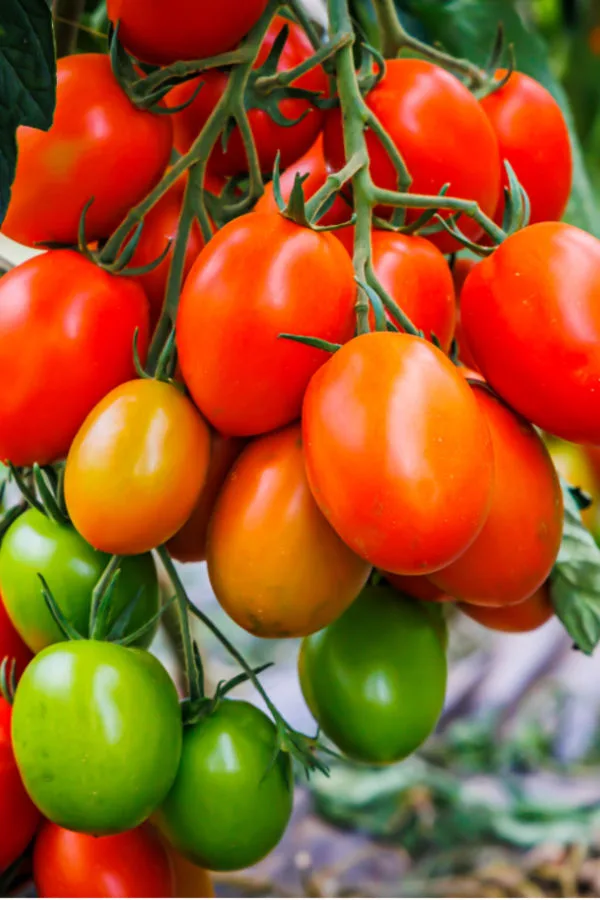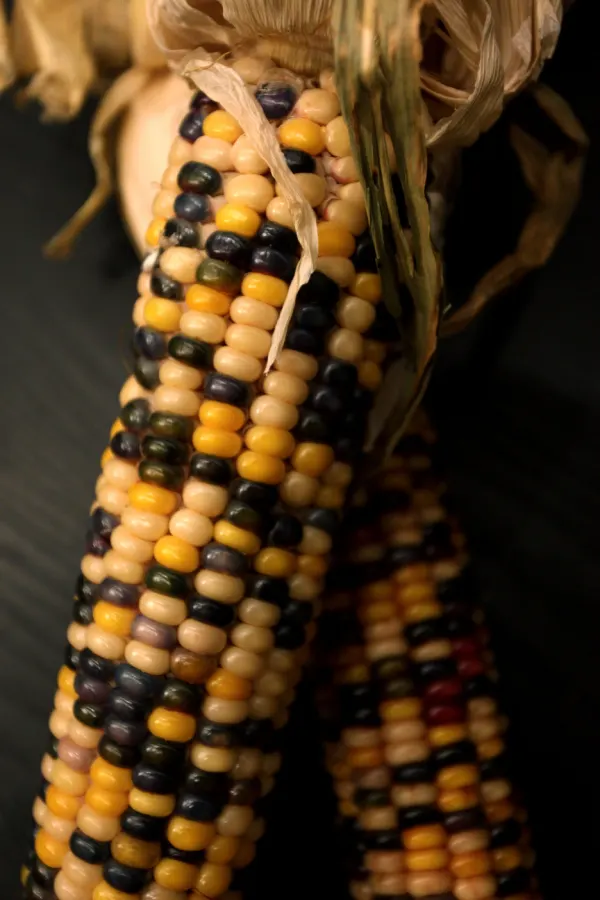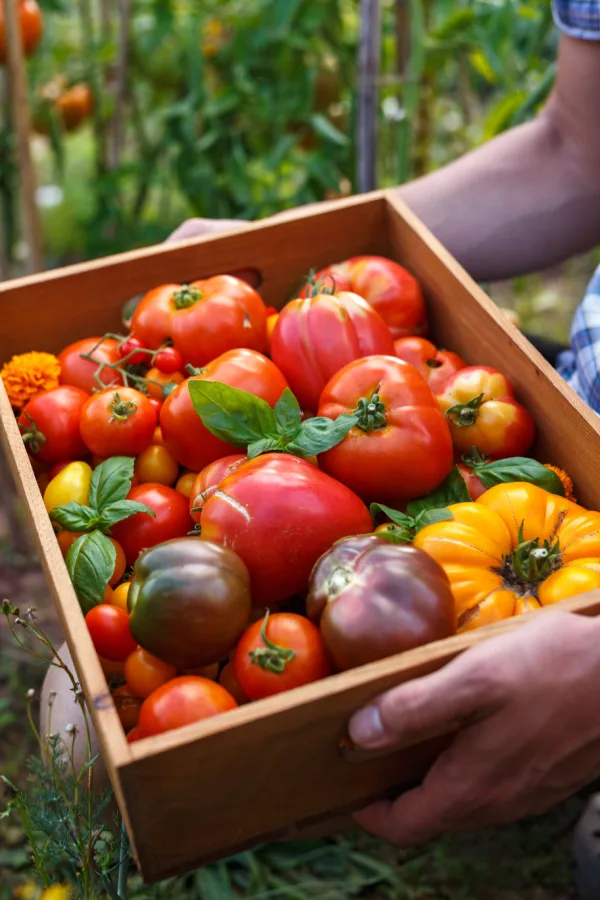If you are looking for a way to save big on your gardening budget – and grow bigger, better and more productive plants next year, then you need to save the vegetable seeds from your biggest and best plants this year!
Whether purchasing new seed or buying transplants each spring, it can be expensive starting a garden. But by saving seeds from the best of the best of your plants late this summer, you can not only have free seeds for next year, but also grow healthier, stronger, and more productive plants!
It’s a simple fact, healthy plants and fruit produce healthier seed stock. In addition, the more a plant continues to develop in the same soil (by planting seeds from the same plant year after year) the better it adapts to that soil.

But beyond all of those great advantages to saving your own seeds, there is something else that makes it great too – and that is the satisfaction that comes from growing your own plants year after year! For us, there is just something special about watching our own plants grow and produce!
With all of that in mind, here is a look at how to save seeds from your garden – including which seeds you can save, and which you can’t.
How To Save Vegetable Seeds From Your Garden
Knowing Which Seeds You Can Save
When it comes to saving vegetable seeds, success starts with knowing which seeds can be saved – and which can’t. One type of plant you will need to avoid are hybrid plants. Although they can grow amazing fruit and vegetables, their seed is not suitable for saving.
Why? Because hybrid plants are a cross of two or more separate vegetable plants. When grown, the seeds from these plants will not produce the same plant the following year.
Instead, they revert back to one of their original crossed-plants, or most often, an undesirable new mutation. Usually, plants grown from hybrid seed stock will result in plants that produce oddly-shaped ad quite tasteless fruit. Sometimes, the plants turn out sterile and won’t produce any blossoms or fruit at all.

Knowing Which Vegetable Seeds You Can Save
When it comes to saving seeds successfully, its all about selecting heirloom (open-pollinated) plant varieties. Seed from open-pollinated plant varieties bear the same crop year after year.
That means when you collect and save seed from these plants, you know exactly what you will get from year to year. And is there ever a wide range of open-pollinated varieties available! From tomatoes, peppers, beans and onions, to peas, corn, pumpkins and more – there are thousands of open-pollinated plants.
Saving Vegetable Seeds – Choosing Your Seed
Now that you know what you can and can’t save, it’s time to start saving seeds! The best time to start saving seed from your plants is after the plant reaches full maturity.
If you select seeds from the first fruit the plant produces, the plant may have not matured enough to produce good seed. With this in mind, selecting fruit during mid to late summer is best. Not is there a better selection of vegetables to choose from, the seed will be much more viable.
When it comes to selecting vegetables for seeds, you want to select the best vegetables your plant produced to take seeds from. The seeds from your highest quality plants and vegetables are also most likely to grow strong and productive plants next year.

It goes without saying, do not use any seeds from damaged vegetables or ones that are coming from plants that show any sign of issues or disease. The likelihood of passing those traits on to next year’s plants are high!
Be sure to pick only mature vegetables that have reached their final size and coloring. If you are growing more than one plant of the same variety, pick a few vegetables from different plants. Not only will it give you adequate seeds to plant next year, it also guards against the chance any one vegetable having a bad seed core.
Drying & Saving Seed
Other than tomatoes (which are covered below), the process of saving seed is nearly identical for all vegetables.
For soft vegetables, cut the vegetable in half and scrape out the seeds from the seed core. For harder vegetables like beans and corn, allow them to dry out a bit before shelling for seed.

Once the seed is our, lay them on a paper towel in a sunny or warm location. This will help to remove excess moisture in the seed and help them dry out. Most seeds will dry out in about a week or two. Once the seeds have dried completely to the touch, place the seeds in a folded paper towel.
By placing in a paper towel, any remaining moisture will wick away from the seed. Now it is all about storing your seed properly – which means sealing them in an airtight zip-lock bag or container and placing in a cool, dry location until ready to use.
You can also store chilled in the refrigerator until spring – but it often takes up valuable refrigerator space. One thing you do not want to do is freeze them. It can simply develop too many moisture issues for your seed.
About Tomatoes – How To Save Vegetable Seeds From Your Garden
Tomatoes, unlike other vegetable plants, require an extra few steps for saving. To create good seed, tomatoes actually need to ferment a bit before drying and storing. This process helps to break down the outer protective coating on a tomato seed, allowing it to germinate the following year.
It sounds difficult and technical, but the process is fairly easy to accomplish. Simply scoop out the pulp and seeds of the tomatoes and place in a jar.

Place the seeds in an out of the way area and allow the seeds and pulp to mold for a few days. This can sometimes put off an odor, so placing them away is a good idea! Then after a few days – just wash off and dry the seeds like above. The mold will etch the seeds and have them ready to germinate next season!
Once all of your vegetable seeds are saved and stored, you will be armed and ready for planting your garden next year – with zero expense! Happy Gardening – Jim and Mary
Jim and Mary Competti have been writing gardening, DIY and recipe articles and books for over 15 years from their 46 acre Ohio farm. The two are frequent speakers on all things gardening and love to travel in their spare time.
As always, feel free to email us at thefarm@owgarden.com with comments, questions, or to simply say hello! You can sign up for our free email list in the subscribe now box in the middle of this article. Follow us on Facebook here : OWG Facebook. This article may contain affiliate links.
